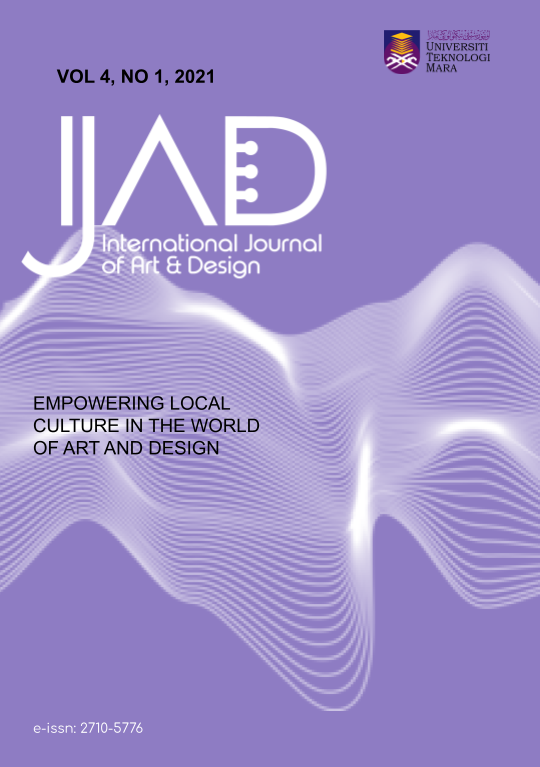The Aesthetic of Bridal Songket in Malay Traditional Wedding Attire
DOI:
https://doi.org/10.24191/ijad.v4i1.2595Keywords:
Aesthetic, Beauty, Bridal, Malay, Songket, WeddingAbstract
Songket is one of the valuable traditional Malay weaving fabrics which is often used as a Malay wedding dress. The term Songket is derived from a Malay word “menyungkit” (leverage) using “gimpal” thread (gold and silver). However, nowadays its usage is beginning to decline due to the presence of foreign fabrics such as Thai silk and the fact is that many Malay brides and grooms are beginning to favor foreign fabrics to dress up at their wedding.This situation eventually would disrupt the production of Songket and affect its reputation as the popular traditional fabric of Malay weddings. Hence, this research aims to examine the aesthetic of Songket fabric in Malay traditional wedding. Researchers used these six principles of the beauty in Malay art by Zakaria Ali in order to interpret the aesthetic of songket in Malay wedding attire that consists of finesse, functional, symbolism, unity, meaningful and contrasting. In conclusion, it could be stated that the aesthetic aspect Songket is very important in Malay society regardless of social status or wealth. Hence, as a national heritage, Songket has to be preserved and revived to its former glory so that it will not be forgotten by future generations.
Downloads
Published
Versions
- 07.08.2024 (4)
- 07.08.2024 (3)
- 16.04.2021 (2)
- 07.08.2024 (1)
Issue
Section
License
Copyright (c) 2020 International Journal of Art and Design

This work is licensed under a Creative Commons Attribution-NonCommercial-NoDerivatives 4.0 International License.






